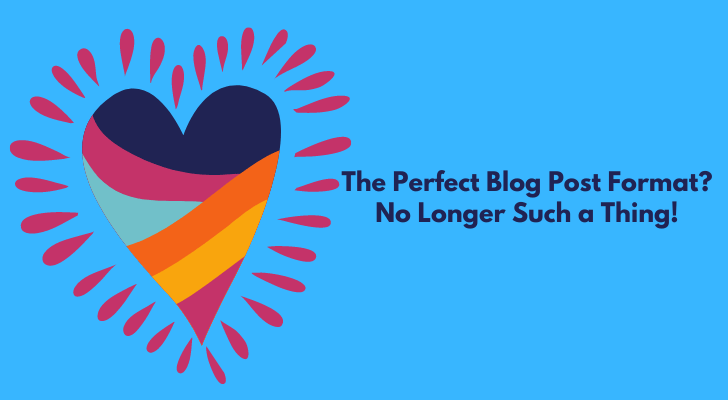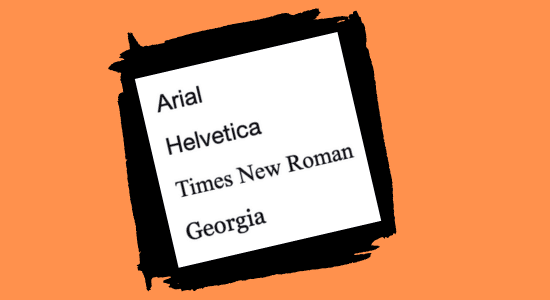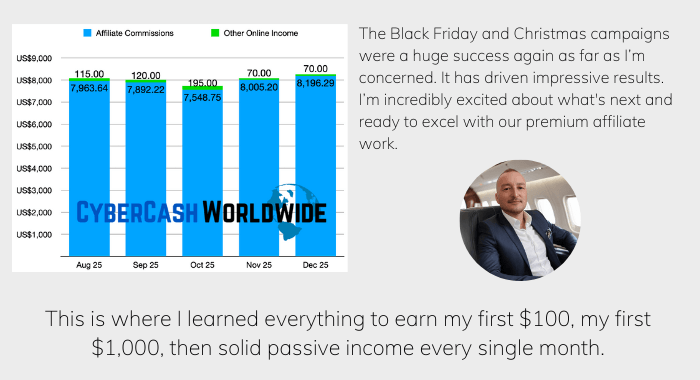Traditional bloggers witness their blog posts falling flat now that anyone can get AI to spit out useless blog posts. So do you want to captivate your readers from the very first sentence? No chance. Is there a such thing as the perfect format for blog posts? I don't think there is, either. But if you are new to blogging, you can learn the basics from this "blog post" - care to read on?

What Makes Up a Blog Post?
Don't be stupid. A blog is short of a web log, anything that you log on a website can be a blog.
You have to start with a headline because that's what you're supposed to do, and usually your headline becomes a permalink (URL) automatically. Unless you are using an outdated blog maker program stuff.
Can a well-crafted title make all the difference? Who knows. It used to matter a lot - whether someone clicked through to read or scrolled right past. Not so much nowadays, although it's worth a try.
Next, you have the introduction. This is supposed to be where you set the stage for what's to come. People don't read that, and bloggers usually only use the first few paragraphs for SEO purposes (making up sentences using the keywords.)
Then you have the body of your blog post, occasionally insert images in between a few paragraphs/sections so that it's fairly easy on the eyes.
That's it.
Oh, the useless part in the end - "conclusion". There's a conclusion at the bottom of each blog post because writers think that an article must conclude. But nobody reads that part. So don't spend too much time if you really feel you must conclude. You don't have to conclude - I repeat, you can do anything you want on your blog space, and whatever you do makes up a blog post!
What Do People Say About "The Perfect Format"?
"How to guides", a.k.a. AI will probably start by saying that the perfect format for blog posts can vary depending on the target audience and the content being presented.
What a useless suggestion, isn't it? If you think it changes according to the target audience, then give at least 10 examples of the "audiences" they're talking about and the different types of content, for god's sake.
I wouldn't say "perfect" but there is a standard format, so I can tell you if you really want to pretend you don't know.
I already mentioned some of them in the previous section so excuse me for repeating them like a parrot.
Captivating Title
You might as well make your blog post really attention-grabbing because the chances are that hundreds of others have already written about the same old topic, if not thousands. And no matter how exciting your content may be, Google won't see it as valuable as big-buck sites like Forbes or Huff Post. Then why not make your title a jaw-dropping one?
If they say your title doesn't accurately reflect your content, let them. If you don't have a hook to entice users, nothing will happen.
Introduction
The introduction - the first few paragraphs - sets the tone for the post. Also, this is where you include the keywords, so it's kind of an important part. But nobody reads it word-by-word, because it's so "blah".

Have you ever checked recipes online? If so, you must know how frustrating it is to have to scroll the page all the way down to view the actual "recipe" every time. All the write-ups are fluffs - "This is my granma's tantalizing chocolate cookie recipe when I was 12, there was this and that..."
Why do they fluff? It's for SEO purposes. If they start a blog post with "2.5 cups all-purpose flour, 1/2 cup brown sugar..." it will never rank well on Google. For users, ingredients are the information they need most, but for bloggers, they need to be at the bottom of the list for SEO. Silly rule, isn't it.
Subheadings
You do need to put subheadings every few paragraphs to break down your blog post into easily scannable sections. Subheadings make it more readable. Use H2 font for section headings, H3 font for sub-section headings, and H4 font if you need to sub-sub a section.
In-Article Ads (if applicable)
Everyone inserts in-article ads, so why shouldn't you? Insert a pay-per-click in between several paragraphs, so users accidentally click them and you can earn a few cents each time.
The world is full of contradictions. They say "Don't make the ads overly obtrusive" but look at all the popular gossip magazine websites - flashy video ads obstruct every other way.
So don't be afraid to distract readers with ads. Get one or two ads to interrupt the flow of the content and nobody dies.
The only thing is that, don't insert too many because it would slow down the page loading speed. That's not good for SEO either.
Content
Focus on providing valuable, well-researched, and engaging content...yeah, blah. Avoid excessive jargon...yeah. Write for your target aud... That's what boring how-to guides always say.
Visuals
Why do we insert images in between paragraphs? Just to make the page appealing, isn't it? The images don't even have to be relevant to the topic, if you think about it, you know. Write about cars, insert a photo of a beach, and see if anyone complains.
Users don't have time to stare at the images and go, "Ummm, this image is irrelevant to the topic. Is it a mistake or...?" If they do, it means they're actually paying attention to your content, you'll be lucky!
But by all means, images, and videos help break up long blocks of text and make the page visually appealing. So do that.
Bullet Points
The use of bullet points will show your writing skill.
For example, if I ask AI to explain why we get tired easily as we get older, it says;
"As we age, several factors contribute to feeling tired more easily. Metabolism slows down, cellular function declines, and hormonal changes occur. Decreased muscle mass and poor sleep quality play a role. Chronic conditions and lifestyle factors also impact energy levels. Regular exercise, a balanced diet, and stress management can help improve energy."
I'm not dyslexic but I feel like I am when I see a paragraph like that. I ask it to summarize it using bullet points, and here it is;
- Aging leads to decreased metabolism and cellular changes, reducing energy production.
- Hormonal changes and muscle mass decline also contribute to fatigue.
- Poor sleep quality, chronic conditions, and lifestyle factors play a role.
- Regular exercise, a balanced diet, and stress management can help improve energy levels in older adults.
Better. Easy to digest, isn't it.
Fonts
No brainer - use easy-to-read, large enough font sizes for the body text. Headings should be a bigger size. Check how they come out on your phone as well.
Use web-safe fonts if you can - most-used sans-serif fonts are Arial and Helvetica and most-used serif fonts are Times New Roman and Georgia, you must have heard of all of them.
Don't use wacky fonts because they may look great to you but they may not be available on your visitor's browser. If the particular font is not available on their browser, it will be automatically replaced by an available font. It means that it will slow down your page loading speed. And there's no point if they can't see what you see.

Call-to-Action (CTA)
Don't forget to include a CTA - "buy now", "get this info", "sign up for my newsletter", etc. Don't be shy, be conversion-focused, and add a great big CTA.
We're often told that a CTA button should be at the end of the post to "guide readers on the next steps". It does make sense, but there's no reason why you shouldn't add it in the middle of your content too. They don't mind you being a little assertive.
Conclusion
I told you already, I think the "conclusion" is a stupid, unnecessary section unless you really want to tell users that you're concluding your opinion (like a product review.)
You might feel that not concluding a post nicely is like going to bed without brushing your teeth. Then write some final words. I feel that sometimes too.
But you know it's not worth going on & on about what you've already said in your body text. Why don't you "summarize" your post instead of "concluding" it? Use bullet points and leave.
Author Bio
If you're reading this, I guess you're not a well-known entrepreneur or anything, and neither am I. So all I can say is, if you really want to prove your credibility, and strongly believe that your blog post and the author bio is relevant to each other, then display your portfolio - professional skills - like you mean it.
I never know what to write in my author bio myself because anyone can make up something. A lot of fake ones go like this,
"I'm a professional blogger and internet marketer. I was born in Miami, FL but now I reside in NY with my partner with 2 dogs."
First of all, if you are a blogger, what's your blog site? And second of all, who cares if you live with dogs or not if your profile photo is fake?
The Perfect Blog Post Format: Conclusion
As I said, I'm not writing my meaningless final words to waste your time on this occasion. So bye!


